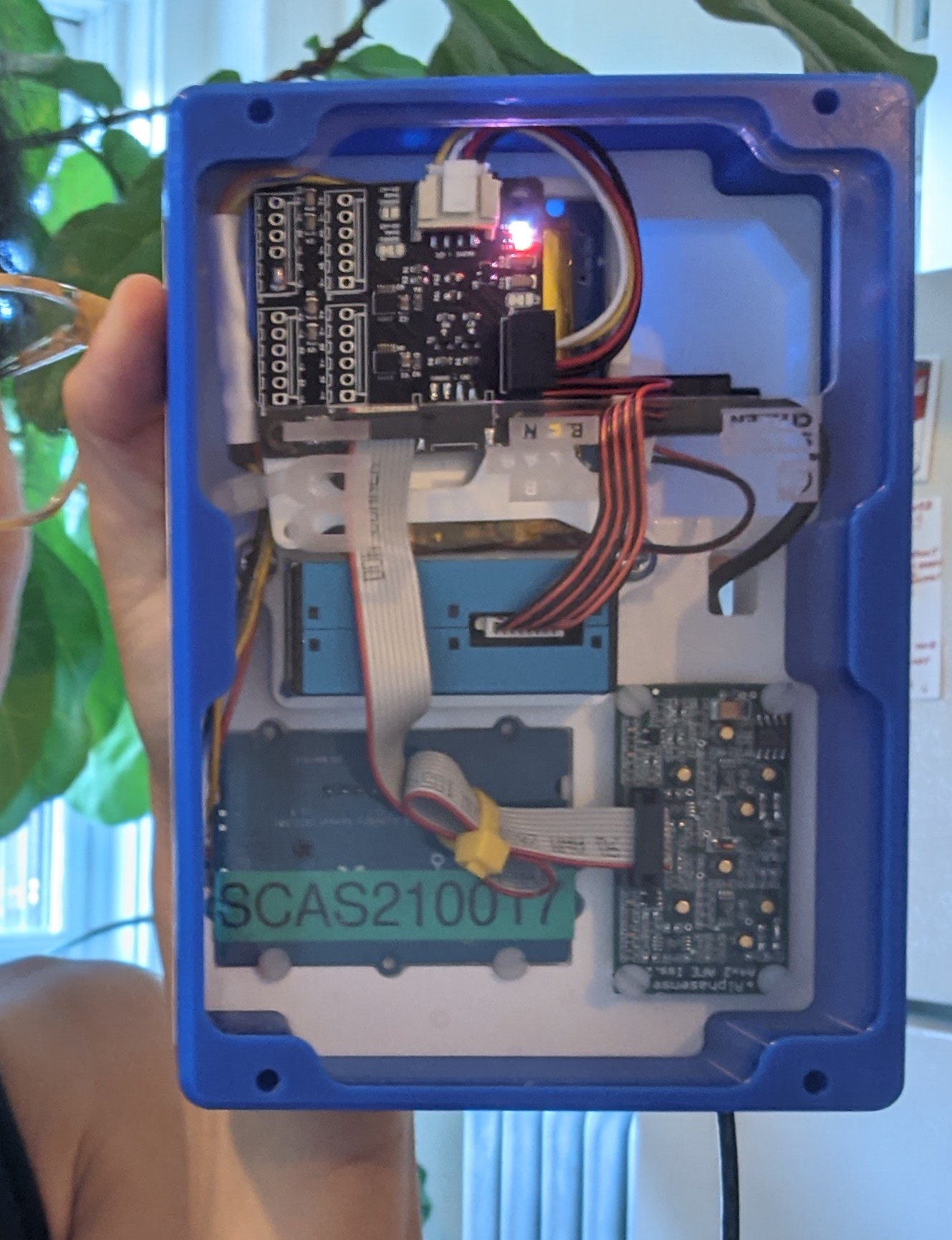Lunchbox of Sensors
We tested take-home sensing kits that can teach residents about about their indoor environments.
Our goal was to engage residents about environmental quality and question the City’s role in collecting data that may impact public health.
Why we did this
As the climate warms, the impacts of unsafe environmental conditions, indoors and outdoors, will multiply. As a means of engaging the public in discussion and planning for the future, MONUM worked with:
- Climate Ready Boston
- the Air Pollution Control Commission, and
- the Boston Public Health Commission to test take-home sensing kits, which we called “Lunchboxes of Sensors.”
We wanted to provide residents with an easy and fun way of gathering and displaying basic information about their indoor environments. Data included noise levels, extreme temperature, particulate matter, and air quality.
Our original plan was to make the Lunchboxes of Sensors widely available to the public with:
- accompanying educational materials
- activity guides, and
- an online dashboard of data from neighborhoods across the City.
The experiment
Our hypothesis? The Lunchboxes of Sensors would provide an opportunity to engage residents in a conversation about environmental conditions and risk. It would also inform them about data privacy and collection policies and engage them in helping to establish safe and transparent data practices citywide.
Exploring new avenues for active resident participation is necessary to:
- understand and address the needs and priorities of the residents, and
- ensure the best performance of the built interventions the City makes to address climate change and environmental health.
When selecting what would go into the "Lunchboxes of Sensors," we had a few criteria:
- We wanted the Lunchboxes of Sensors to be easy and fun for families to set up at home together.
- We also wanted the data the sensors provided to be accurate, timely, and simple to understand (in multiple languages).
- Last but not least, we wanted to make sure that all individual users’ information (such as names and addresses) remained secure and private.
After evaluating several options, we purchased two SmartCitizen kits from FabLab Barcelona. We tested the sensors with users in their homes and collected feedback on the:
- kits themselves
- online dashboard, and
- accompanying educational materials and activity books.
Results and lessons learned
Indoor air quality sensors are still an emerging technology.
It was challenging to find a sensor that met all of our requirements around data accuracy while providing a good experience for users. The technology used in many low- and medium- cost indoor air quality monitors is sometimes unreliable. It's also difficult to set up in users’ individual homes. This was especially true when it came to measuring pollutants, like carbon monoxide, that we felt were important to providing data that was relevant to resident health.
Environmental data (especially on air quality) gets easily lost in translation.
Simply providing data about air quality and temperature is not enough. Most people require some additional context to make meaning from the raw information they receive. For example, it can be difficult to understand when and why certain levels of air pollutants may be harmful to some users in one context, and unconcerning for others. This level of explanation, while important, was challenging to provide in a way that was accessible to everyone.
Communities are ready for action.
We wanted to provide residents with information about their indoor environments that was not only educational but also actionable and empowering. Many community members we spoke to expressed a sense of fatigue with data collection in their neighborhoods. This was true even when that data collection included them in the process.
These residents suggested that rather than waiting for more data-driven study on known risk factors such as extreme heat and air pollution, the City first provides:
- greater transparency about how it is planning to respond to the data, and
- what solutions it is willing to consider.
For now, we are pausing the Lunchbox of Sensors project. We will be focusing on other air quality initiatives that are a better fit for community needs. If you are interested in experimenting with one of the existing prototype kits, you can contact newurbanmechanics@boston.gov to check one out at City Hall.



